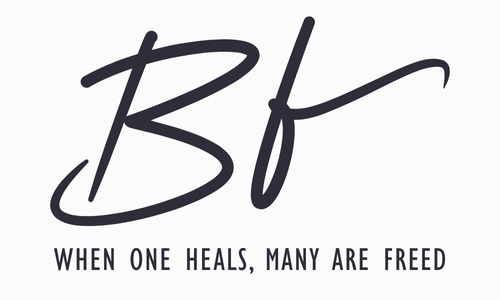How Shame Shows Up in the Body: Tension and Shutdown
Image Credit: A. C.
Have you ever felt sick with shame?
Maybe your stomach dropped, your chest tightened, or your face flushed hot.
Maybe you froze up in a moment when you most wanted to speak.
Shame is felt in the body, not just an insidious concept that resides in your brain.
If you’ve ever wondered why shame can feel so physical, you’re not alone. Many people describe it in almost the same way: a heavy chest, a sinking feeling in the stomach, or the urge to curl up and disappear. You could be forgiven thinking that it is a sign of weakness, it is actually the body’s natural response to an emotion wired deeply into your nervous system.
What Shame Feels Like in the Body
Shame has a way of making itself known physically before we’ve even found the words. Some of the most common sensations people describe include:
A rush of heat in the face (blushing).
Tightness in the chest or throat.
A sinking or hollow feeling in the stomach.
A desire to shrink, hunch or curl up, or hide.
Going blank or frozen where your brain feels unable to find the right words.
Numbness or heaviness, as if shutting down.
If you’ve ever experienced any one or multiple of these, it’s not “all in your head.”
Shame is likely the culprit, and it shows up in the body for a reason.
Image Credit: Pablo Merchán Montes
Why Shame is More Than a Thought
Shame is often described as a painful belief like “I am not enough” or “I am unworthy.” But neuroscience shows it’s also an embodied state, not just a belief.
Research using brain imaging has found that shame activates areas linked to bodily awareness (insula), social pain (anterior cingulate cortex), and inhibition (premotor cortex). In other words, shame literally lights up the brain circuits that track how we feel in our body and whether we’re accepted or excluded by others.
As trauma expert Bessel van der Kolk has written, emotions like shame are “imprinted” in the body, often resurfacing as sensations long before the logical brain can make sense of them. That’s why shame feels so overwhelming because your body has already reacted before you’ve had a chance to reason with it. It’s main reason why van der Kolk’s book is titled The Body Keeps the Score.
Shame and the Nervous System
Shame often triggers the body’s shutdown response.
According to polyvagal theory (Stephen Porges), our nervous system is wired with three main modes: fight/flight and freeze. When the body feels threatened but fighting or fleeing isn’t possible, it can default to shutdown (if it was effective at the first time of deployment) which involves collapsing inward, numbing, or freezing.
Shame taps into this system.
When shame is triggered, people often describe feeling small, or invisible, or like they want to disappear or have the Earth swallow them up. The nervous system is trying to protect you from what it perceives as an overwhelming social threat.
Image Credit: Valeriia Miller
Gentle Ways to Begin Noticing Shame in the Body
While shame can feel automatic and overpowering, the first step to softening its grip is simply noticing how it shows up in your body. Here are three gentle practices you can try:
Name it without judgement
When you feel something internal start to tighten or hollow and, from experience, recognise it to be shame, try saying to yourself: “This is shame in my body.” Naming it helps you create space from it.Ground yourself in the present
Press your feet firmly into the floor. Place a hand on your chest. Take a slower, more mindful breath. These small gestures remind your body that you are safe now, even if shame is telling you otherwise. Shame transports you to the past, and this act will bring you back to the present.Reach for safe connection
Shame thrives in silence. If you can, share even a small piece of your experience with someone you trust: “I feel like I want to hide right now.” Being met with empathy instead of judgement can begin to loosen shame’s hold.
These aren’t quick fixes, but they are small, practical ways to meet shame in the body with gentleness.
Image Credit: Carlos de Miguel
How Therapy Helps with Embodied Shame
Because shame is so physical, it rarely shifts just by trying to “think differently.”
Therapy can help by creating a safe space to notice these body signals without judgement.
In hypno-psychotherapy, guided visualisations and grounding practices can help you meet those sensations in a calmer state, making them feel less threatening. Over time, this helps the nervous system learn that shame no longer needs to hijack your body in the same way.
Therapy doesn’t erase shame overnight. But it can help you move from shutdown toward connection, teaching your body and mind together that you are worthy of being seen.
If shame leaves you feeling sick, frozen, or weighed down, you’re very much human.
Shame shows up in the body because it’s wired to protect us, but it doesn’t have to control your life.
I can help you work with shame gently and safely, supporting you to reconnect with your body and rebuild self-worth.
I offer both online therapy across the UK and in-person sessions in Dorset.





